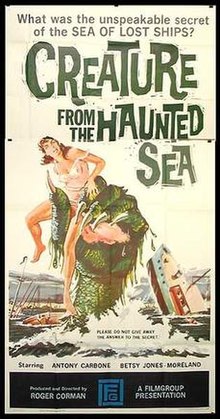
Roger William Corman is an American film director, producer, and actor. Known under various monikers such as "The Pope of Pop Cinema", "The Spiritual Godfather of the New Hollywood", and "The King of Cult", he is known as a trailblazer in the world of independent film. Many of Corman's films are low-budget cult films including some which are adapted from the tales of Edgar Allan Poe.
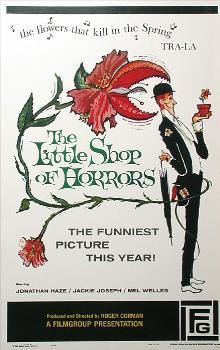
The Little Shop of Horrors is a 1960 American horror comedy film directed by Roger Corman. Written by Charles B. Griffith, the film is a farce about a florist's assistant who cultivates a plant that feeds on human blood. The film's concept may have been inspired by "Green Thoughts", a 1932 story by John Collier about a man-eating plant. Hollywood writer Dennis McDougal suggests that Griffith may have been influenced by Arthur C. Clarke's 1956 science fiction short story "The Reluctant Orchid".

It Conquered the World is an independently made 1956 American black-and-white science fiction film, produced and directed by Roger Corman, starring Peter Graves, Lee Van Cleef, Beverly Garland, and Sally Fraser. It Conquered the World was released theatrically by American International Pictures as a double feature with The She-Creature.
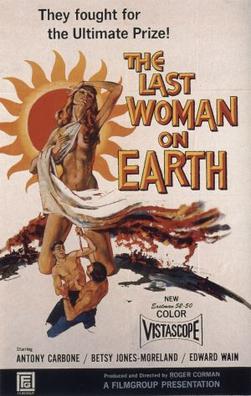
Last Woman on Earth is a 1960 American science fiction film that was produced and directed by Roger Corman. It tells the story of three survivors of a mysterious apocalypse, which appears to have wiped out all human life on earth.
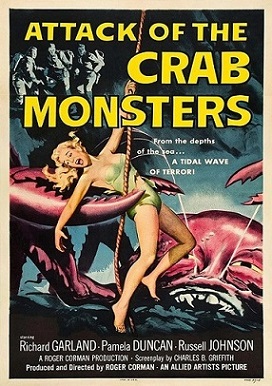
Attack of the Crab Monsters is a 1957 independently made American black-and-white science fiction-horror film, produced and directed by Roger Corman, that stars Richard Garland, Pamela Duncan, and Russell Johnson. The film was distributed by Allied Artists as a double feature showing with Corman's Not of This Earth.
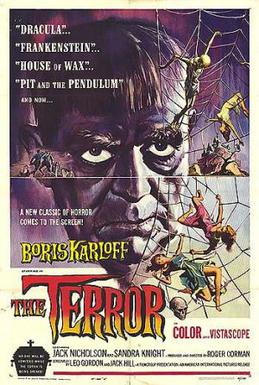
The Terror is a 1963 American independent horror film produced and directed by Roger Corman. The film stars Boris Karloff and Jack Nicholson, the latter of whom portrays a French officer who is seduced by a woman who is also a shapeshifting devil.
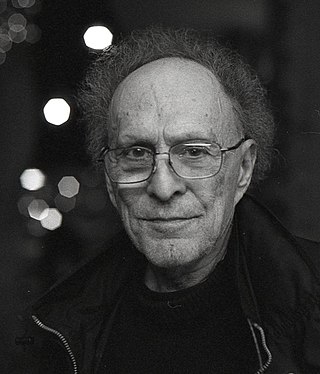
Monte Hellman was an American film director, producer, writer, and editor. Hellman began his career as an editor's apprentice at ABC TV, and made his directorial debut with the horror film Beast from Haunted Cave (1959), produced by Gene Corman, Roger Corman's brother.

A Bucket of Blood is a 1959 American comedy horror film directed by Roger Corman. It starred Dick Miller and was set in the West Coast beatnik culture of the late 1950s. The film, produced on a $50,000 budget, was shot in five days and shares many of the low-budget filmmaking aesthetics commonly associated with Corman's work. Written by Charles B. Griffith, the film is a dark comic satire about a dimwitted, impressionable young busboy at a Bohemian café who is acclaimed as a brilliant sculptor when he accidentally kills his landlady's cat and covers its body in clay to hide the evidence. When he is pressured to create similar work, he becomes a serial murderer.

Walter Frank Hermann Wolff was an American actor whose film career began with roles in five 1958–61 Roger Corman productions and ended a decade later in Rome, after many appearances in European-made films, most of which were lensed in Italy.

Beast from Haunted Cave is a 1959 horror/heist film directed by Monte Hellman and starring Michael Forest, Frank Wolff and Richard Sinatra. It was produced by Gene Corman, Roger Corman's brother. Filmed in South Dakota at the same time as Ski Troop Attack, it tells the story of bank robbers fleeing in the snow who run afoul of a giant spider-like monster that feeds on humans. The film was released as a double feature with The Wasp Woman (1959).
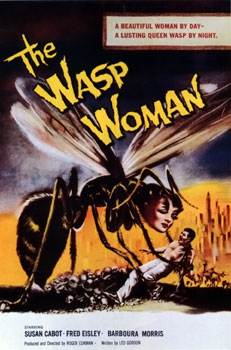
The Wasp Woman is a 1959 American independent science-fiction horror film produced and directed by Roger Corman. Filmed in black-and-white, it stars Susan Cabot, Anthony Eisley, Michael Mark, and Barboura Morris. The film was originally released by Filmgroup as a double feature with Beast from Haunted Cave. To pad out the film's running time when it was released to television two years later, a new prologue was added by director Jack Hill.

Charles Byron Griffith was an American screenwriter, actor, and film director. He was the son of Donna Dameral, radio star of Myrt and Marge, along with Charles' grandmother, Myrtle Vail, and was best known for writing Roger Corman productions such as A Bucket of Blood (1959), The Little Shop of Horrors (1960), and Death Race 2000 (1975).

Gunslinger is a 1956 American Western film directed by Roger Corman and starring John Ireland, Beverly Garland and Allison Hayes. The screenplay was written by Mark Hanna and Charles B. Griffith.
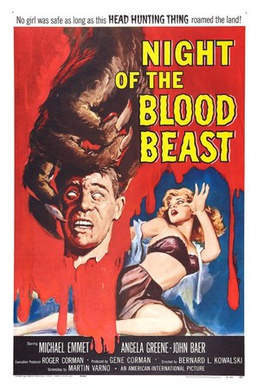
Night of the Blood Beast is a 1958 American science-fiction horror film about a team of scientists who are stalked by an alien creature, which implants its embryos in an astronaut's body during a space flight. Produced by exploitation filmmaker Roger Corman and his brother Gene, it was one of the first films directed by Bernard L. Kowalski and was written by first-time screenwriter Martin Varno, who was 21 years old. It starred several actors who had regularly worked with Roger Corman, including Michael Emmet, Ed Nelson, Steve Dunlap, Georgianna Carter and Tyler McVey. The film was theatrically released in December 1958 as a double feature with She Gods of Shark Reef.

Monster from the Ocean Floor is an American 1954 science fiction film about a sea monster that terrorizes a Mexican cove. The film was directed by Wyott Ordung and starred Anne Kimbell and Stuart Wade.

Naked Paradise is a 1957 drama film directed by Roger Corman. It stars Richard Denning and Beverly Garland.

Ski Troop Attack is a 1960 American war film directed by Roger Corman and starring Michael Forest, Frank Wolff, Richard Sinatra, and Wally Campo. Filmgroup released the film as a double feature with Battle of Blood Island (1960).
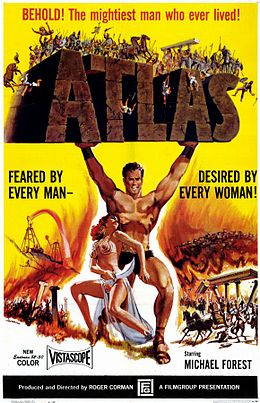
Atlas is a 1961 peplum film directed by Roger Corman and starring Michael Forest and Frank Wolff. It was filmed in Greece. Corman called it "my last attempt to do a big picture on a low budget." Writer Charles B. Griffith said "Atlas was a mess. It was a doomed project. "
The Filmgroup was a production and distribution company founded by filmmakers Roger Corman and Gene Corman in 1959. Corman used it to make and distribute his own movies, as opposed to ones he was making for American International Pictures. The company ultimately folded, however, lessons from running the company helped Corman make a success later of New World Pictures. Filmgroup also produced early feature work of Francis Ford Coppola, Peter Bogdanovich, Charles B. Griffith, Curtis Harrington, Jack Hill, Monte Hellman, Robert Towne and Jack Nicholson.

The Haunted Sea is a 1997 American horror film directed by Dan Golden, starring Krista Allen, James Brolin, Joanna Pacula and Don Stroud. It was originally intended as an installment of the television anthology Roger Corman Presents, but was rejected by the series' broadcaster and instead premiered on home video on November 11, 1997. It shares part of its title with Corman's 1961 film Creature from the Haunted Sea, but similarities are limited to the supernatural marine theme.
